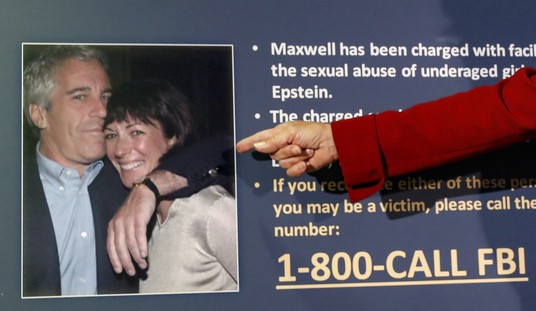Every time I give in to the temptation of thinking of Pennsylvania as The Most Important State™ this year, I remind myself that Trump’s path to 270 is so narrow that effectively every state he’s targeting is The Most Important State™. Virtually all of them are must-win. If he ekes out a victory in Pennsylvania but loses a heartbreaker in North Carolina, he’s effectively finished. He’d have to pull Michigan into the red column to get back on track to 270, which is a heavier lift than Pennsylvania. In fact, he could win North Carolina and Pennsylvania and Ohio and Michigan — a major play in the Rust Belt — and still lose narrowly if Hillary takes Florida and Arizona. The reason Pennsylvania seems especially significant is (a) registrations in the state have been trending Republican, which means an electorate that should be more receptive to the GOP message than it’s been and (b) Trump’s culturally conservative protectionist message could make him more appealing to rural and blue-collar Pennsylvanians than Romney’s traditional “tax cuts for the rich” pitch was. I watch Pennsylvania not because it’s “worth” more than any other state but because I assume that if Trump starts to make a game-changing move in the race, you’ll see it there first. It’s fertile ground.
No game-changer yet, per Monmouth.
Among Keystone State voters likely to cast ballots in November’s presidential election, 48% currently support Clinton and 40% back Trump. Another 6% intend to vote for Libertarian Gary Johnson, 1% back Jill Stein of the Green Party, and 4% are undecided. Slightly more Democrats back Clinton (86%) than Republicans who back Trump (81%). Independents are divided at 39% for Trump and 36% for Clinton, with 17% supporting Johnson and 2% supporting Stein.
Clinton leads by a massive 85 points among black, Hispanic, and Asian voters (90% to 5%), while Trump leads by 9 points among white voters (48% to 39%). In 2012, Barack Obama won non-white voters by 71 points while Mitt Romney took the white vote by 15 points. Trump is winning white men by 18 points (50% to 32%), but is virtually tied among white women (45% to 46% for Clinton). The GOP nominee is ahead among white voters without a college degree by 25 points (57% to 32%), but is trailing among college educated white voters by 10 points (37% to 47%). Four years ago, Romney won the votes of both white men (by 21 points) and white women (by 9 points). He also won the white vote by a similar margin regardless of education – by 13 points among non-graduates and by 15 points among those with a college degree.
As you read that last paragraph, you probably thought “I’ve seen this movie before.” That’s been the story of most polls since the convention — Hillary winning a landslide among nonwhite voters and staying competitive enough among key slices of the white vote, most notably women and college grads, to give her a comfortable lead overall. Nothing changes nationally for Trump until those groups start to change. The guy simply can’t pile up enough white working-class votes to offset his weakness among better-educated whites, women, and minorities.
What makes this poll noteworthy is that it’s the first survey of the state by a major pollster in three weeks. During the first week of August, several firms had Trump trailing by nine points in the four-way race. The mystery in today’s Monmouth release was whether anything had changed since then — Clinton Foundation revelations, Trump’s outreach to minority voters, his “softening” on immigration, his campaign shake-up, and so on. Has Pennsylvania tightened at all because of any or all of that? Monmouth’s answer: No, not really. Eight points is a big lead in the four-way race there, in fact, compared to Clinton’s four-point average lead in the national race. But wait — what about that Emerson College poll yesterday showing a newly close three-point race in Pennsylvania? How do we know that Monmouth is closer to reality than Emerson is? We don’t for sure, but there’s a flaw in Emerson’s methodology that I overlooked yesterday when blogging that poll: It was conducted by calling landlines only, not a combination of landlines and cell phones like most pollsters (including Monmouth) do. That’s important because, as you might imagine, there are many voters out there who don’t have a landline at home, only a cell, and they skew younger. Younger voters tilt Democratic. If you omit the cell-only crowd from your poll, it’s a cinch that you’re going to get a sample that tilts older and more Republican than it should.
There’s one other factoid about Pennsylvania worth noting, although it doesn’t come up in Monmouth’s data. The share of the population that’s Catholic is 29 percent, above average among the 50 states. Why is that potentially important? WaPo published this eye-opening graph tracking voters nationally a few days ago:

Hillary’s improved a lot on Obama’s share of the national Catholic vote. Obama won that group by just two points over Romney in 2012, 50/48. Clinton, however, is blowing Trump out, 61/34. When you consider that Catholics nationally are about a quarter of the electorate, notes WaPo, it means that her advantage among them is worth somewhere between five to seven points overall — the margin of her lead in many polls. Catholic sentiment is yet another obstacle to a Trump comeback in Pennsylvania.








Join the conversation as a VIP Member